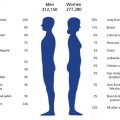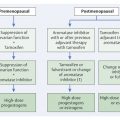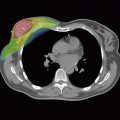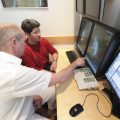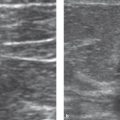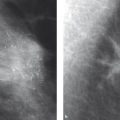Informed Consent
Before clinical and/or imaging procedures are begun, it is a matter of course that the patient be thoroughly informed about her own risk profile and receive a detailed and critical explanation of the advantages and disadvantages of the various diagnostic methods. This applies both to women receiving a work-up examination of conspicuous or suspicious findings and, most importantly, to women in the context of early detection of breast cancer.
Take Home Point
General Recommendations for Information and Consultation in the Context of Early Detection
Patient information in the practice of early breast cancer diagnostics should not be limited to pre-printed texts; it requires a consultation with a physician who takes the woman’s preferences, needs, concerns, and fears into account. This permits the woman to participate in the decision-making process and enables her to give informed consent.
4.3 Self-Examination
Breast self-examination on a regular basis does not increase breast cancer survival rates, as breast carcinomas are generally not palpable until they measure some 2 to 3 cm. At this stage, detection does not improve long-term survival and cannot be termed early detection. Nevertheless, not carrying out breast self-examination can be recommended only to women who have diagnostic imaging performed regularly as part of breast cancer early detection. It has been established that women who do perform regular breast self-examinations tend to have a higher level of health awareness and make good use of the potential of imaging for early breast cancer detection.
Take Home Point
General Recommendations for Breast Self-Examination
Breast self-examination alone cannot lower the breast cancer death rate, even with proper training and regular application.
It is important to stress certain aspects when advising women who are interested in performing breast self-examination:
Visual inspection: Inspection should be performed looking in a mirror, first with the arms at one’s sides, then with them raised, and then while bending over forward with the arms hanging down. It is particularly important here to check for any dimpling or retraction of the skin or nipple.
Palpation: Palpation is performed in a standing position with both hands, then in the supine position with one hand. The breast should be palpated in a circular, back and forth, or radial pattern. A common recommendation is to do the self-examination in the shower because the use of soap or lotion increases sensitivity compared to palpation with dry skin. Palpation should include the underarm area for lymph node enlargement.
4.4 Inspection
The physician’s clinical examination begins with a visual inspection of the breasts. The patient is in a standing or sitting position with her arms hanging loosely, while the doctor inspects the nipple, areola, and cutaneous structures, comparing the right and left breasts. Attention is paid to asymmetries, changes of the skin, redness, and eczematous changes, any of which may be an indication of inflammation or tumor. It is also important to note any skin appendages (e.g., nevi, cutaneous angiomas), as these may be mistaken for suspicious findings in imaging.
Next, with the arms raised, the doctor looks for any flattening or retraction of the skin or nipple, as these signs may indicate the presence of a malignant tumor. These signs are produced by some tumors that retract surrounding tissue, curtailing the motility of the subcutaneously fixed Cooper ligaments and resulting in an inward pull on part of the nipple or skin when the arms are raised. Another task in visual inspection is looking for supernumerary “breast formations” along the milk line.
▶ Fig. 4.1– ▶ Fig. 4.23 show various findings on visual inspection.

Fig. 4.1 Anisomastia. (a) Mild form. (b) Severe form.

Fig. 4.2 Macromastia.

Fig. 4.3 Supernumerary nipple along the milk line.

Fig. 4.4 Skin retraction. (a) Postsurgical scar. (b) Mild retraction due to breast carcinoma. (c) Pronounced retraction due to carcinoma. (d) Mondor’s disease (thrombophlebitis). (e) Mondor’s disease with thrombophlebitis extending to the abdominal wall.
Stay updated, free articles. Join our Telegram channel

Full access? Get Clinical Tree


